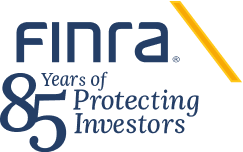AMC has magically come off of the threshold list. A real time example of no transparency is the fact that there are many different speculations as to how that happens after being on it for 10 days with no price movement. (The bigger short laddering happened on Thursday and AMC was on the list on Friday still). It wasn't until late Friday it became apparent that it had been taken off. Is
I think fines should be raised. All short sales should be reported to you bu the end of each day and made public just like when you buy a share. Enforse FTD purchases upon noncompliance within 2 settlement days. I think it’s unfair that things are not more transparent. It’s our money our shares that are loaned out without permission. Please raise fines so they think twice before illegal things
I oppose putting restrictions on investing in inverse or leveraged ETFs. Just like any stock investment, I clearly understand the the risks involved and under certain market conditions, I need a hedge to decrease my risk. I am the best person to be making my own investment decisions and not relying on others to be making choices for me that are not in my best interest. You should also not be
Leveraged funds are diversified to begin with offsetting risk. If folks want to lever them 2x or 3x that's still far less risky than buying an individual stock. Given other issues in the markets it's baffling regulators are focus on funds and not out of the money options or crypto as real issues that can affect investors who aren't as experiences. As a former
To Whom May be Concerned, I am an educated investor and should not have to go through any special process like passing a test before you can invest in public securities, like leveraged and inverse ETFs. Not only I am capable of understanding leveraged and inverse funds and their risks, I truly believe it's my choice and rights to invest on stocks or funds the way I want. That said, the
Dear Sir or Madam,
I am an individual investor to stock market in US, and part of my portfolio is consisted of leveraged ones. I like this measure, for it is good way to invest more than available cash or other asset and provide me opportunity to get better result. Please do not restrict this opportunity and let me keep doing what I have been for 10+ years.
Waiting for good news
I invested in XRP because of the barbaric SEC frivolously claiming to have legal authority to do things that they clearly dont. There is no reason for SEC to exist and all SEC employees should be blacklisted. SEC is consistently guilty of creating the very problems it was supposedly created to solve. No barriers to entry should exist for participation in the markets. They just want to reduce
Dear members of FINRA,
Although I do believe it's prudent to have educated public investors who want to partake in investments that are more complex than single stocks, it is extremely unfair to deny public investors, and only allow individuals who demonstrate a high net worth, access to more complex products that can be used to hedge one's investment risks in today's
I am an individual investor and I have been taking advantage of leveraged ETFs for some time. I limit use of leveraged ETF to one of the 3 major stock market indexes, where my portfolio has diversification. I understand leveraged ETFs may be volatile, but theres a lot of individual securities that are more volatile. Regulators should not place more restrictive rules on leveraged ETFs. All
I have been investing in the stock markets for over 50 years and am quite capable of making my own considered evaluations about a particular investment. I also study competent outside advice. I do not need or want your interference in my right to make those decisions, thank you very much! In other words, just bug off, Nanny, and stick to your job of rooting out the fraudulent practices in your
